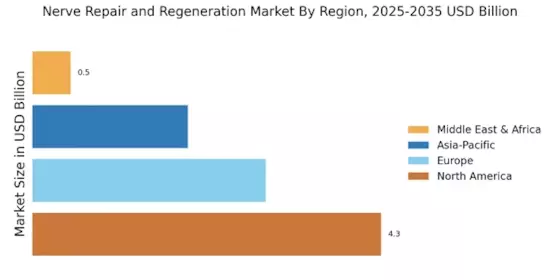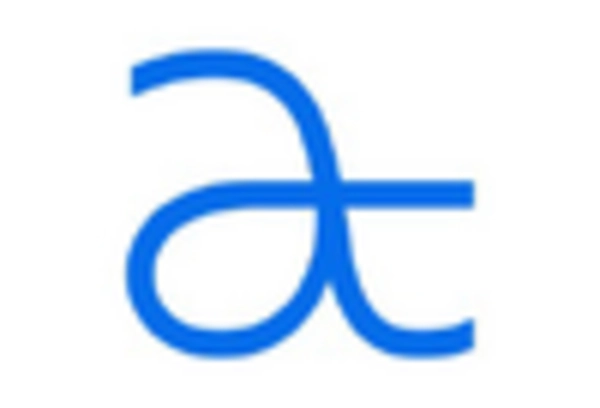Rising Geriatric Population
The Nerve Repair and Regeneration Market is poised for growth due to the rising geriatric population, which is more susceptible to neurological disorders and nerve injuries. As individuals age, the likelihood of experiencing conditions such as neuropathy and other nerve-related issues increases. Current demographic trends suggest that by 2030, the number of individuals aged 65 and older will surpass 1 billion globally. This demographic shift is expected to create a heightened demand for effective nerve repair solutions, as older adults seek treatments to improve their quality of life. Consequently, the Nerve Repair and Regeneration Market is likely to expand in response to the needs of this growing population.
Advancements in Regenerative Medicine
The Nerve Repair and Regeneration Market is significantly influenced by advancements in regenerative medicine, which offers promising avenues for nerve repair. Techniques such as stem cell therapy and tissue engineering are gaining traction, providing innovative solutions for nerve regeneration. Recent studies indicate that stem cell-based therapies can enhance nerve repair outcomes, potentially leading to faster recovery times and improved functionality. The integration of these cutting-edge technologies into clinical practice is expected to drive market growth, as healthcare providers increasingly adopt regenerative approaches to treat nerve injuries. Furthermore, the ongoing research and development in this field suggest a bright future for regenerative medicine, with the potential to revolutionize the Nerve Repair and Regeneration Market.
Growing Investment in Neuroscience Research
Investment in neuroscience research is a critical driver for the Nerve Repair and Regeneration Market. Increased funding from both public and private sectors is facilitating the exploration of novel therapeutic approaches for nerve repair. Recent reports indicate that global funding for neuroscience research has seen a substantial increase, with billions allocated to studies focused on nerve regeneration and repair mechanisms. This influx of capital is likely to accelerate the development of innovative treatments and technologies, thereby enhancing the overall market landscape. As researchers uncover new insights into nerve biology and repair processes, the potential for groundbreaking therapies in the Nerve Repair and Regeneration Market appears promising.
Increasing Demand for Nerve Repair Solutions
The Nerve Repair and Regeneration Market is witnessing a surge in demand for innovative solutions aimed at treating nerve injuries and disorders. This demand is primarily driven by the rising prevalence of neurological conditions, which affects millions of individuals worldwide. According to recent estimates, the incidence of peripheral nerve injuries is projected to reach approximately 1.5 million cases annually. As a result, healthcare providers are increasingly seeking advanced nerve repair techniques, including surgical interventions and regenerative therapies. The growing awareness of the importance of timely and effective nerve repair is likely to propel market growth, as patients and healthcare professionals alike recognize the potential for improved outcomes through specialized treatments.
Technological Innovations in Surgical Techniques
Technological innovations in surgical techniques are transforming the Nerve Repair and Regeneration Market. Advances in minimally invasive procedures and robotic-assisted surgeries are enhancing the precision and efficacy of nerve repair interventions. These innovations not only reduce recovery times but also minimize complications associated with traditional surgical methods. Recent data suggests that the adoption of these advanced surgical techniques is on the rise, with a notable increase in successful outcomes reported in clinical settings. As healthcare providers continue to embrace these technologies, the Nerve Repair and Regeneration Market is expected to benefit from improved patient outcomes and increased procedural volumes.


















Leave a Comment